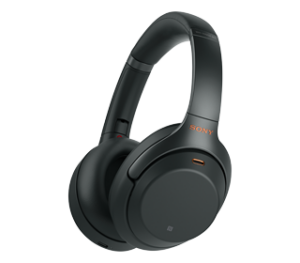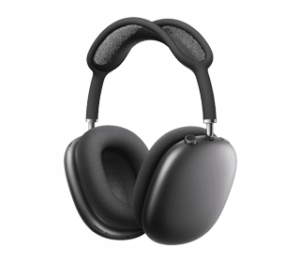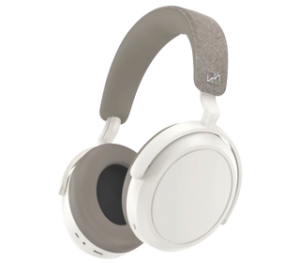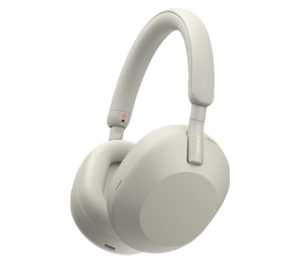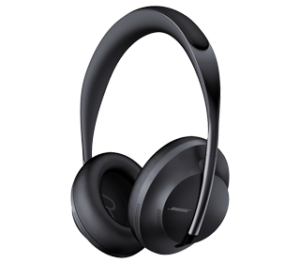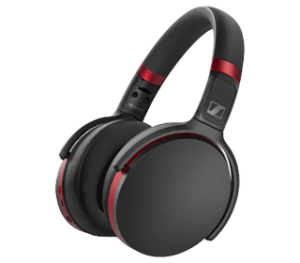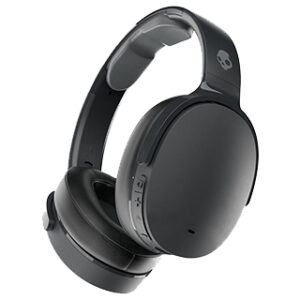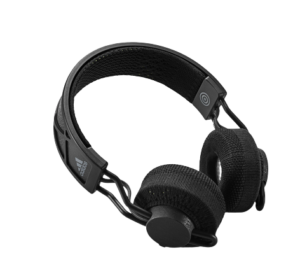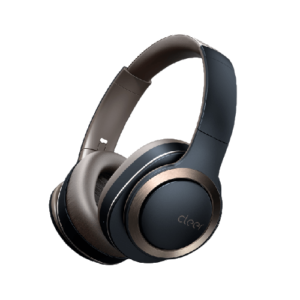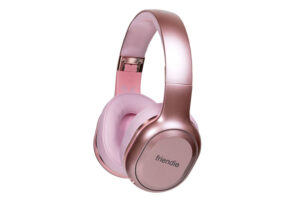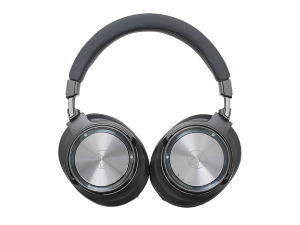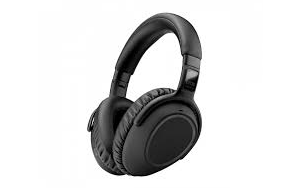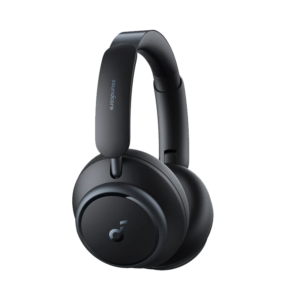Sonos' ace in the hole bets big on design.
Sonos Ace review: The Great Contender
Sonos' first set of headphones has been a long time coming but it's hard to look past the uphill battle the brand faces. The premium wireless headphones segment might have settled down in recent years but the heavyweights like Sony, Sennheiser and Bose have hardly lost their lustre. The category isn't quite stagnating, but it has felt a little gridlocked in recent years.
Within that context, the Sonos Ace isn't quite a slam dunk. Still, it gets enough right that it might just shake up this situation. It's hard not to wish it was a little cheaper but difficult to complain too loudly given how pricey some of the competition is. For better or worse, the Sonos Ace is exactly what you'd expect from the company. In short, it nails the things that the company are typically good at. Then, it stumbles on some of the things that sit outside that comfort zone.
Even if the Sonos Ace mostly comes out with a net positive, I can't help but shake the sense that this is just a warm-up and that the best is yet to come.
How much does the Sonos Ace cost in Australia?

In Australia, the Sonos Ace will be available from 5 June 2024 at an RRP of $699. That's pretty expensive, even by the standards of noise-cancelling over-ear headphones. It's more costly than the category's current MVP (the Sony WH-1000XM5s) but a little more affordable than the Apple AirPods Max.
As usual, you can always save by shopping around. Check out the table below for a round-up of deals for the Sonos Ace.
Sonos Ace: Design and features

The Sonos Ace doesn't have to work too hard to live up to the expectations that come with being the brand's first foray into over-ear headphones. From afar, these headphones look like a natural fusion of high-end headphones like those made by the likes of Bose and the minimalist speakers that Sonos is known for.
Rather than choose between style and substance, Sonos has opted to meld the two virtues in a way that comes often across as thoughtful. Up close, it's the little touches that help the Ace stand out. The matte finish is nice and fresh out of the box, but it's coupled with a fingerprint-resistant coating that keeps it that way for longer. The stainless steel accents on the headband are nice, but that's just the most visible part of a versatile yoke-shaped hinge system that makes the Ace comfortable and easy to adjust. Finally, the vegan leather earcups are comfortable on your ears but (thanks to a few well-placed magnets) they're super easy to detach if you want to clean or replace them.
More than any of these other design choices, the thing that sets the Sonos Ace apart from the competition is its rejection of touch controls. Instead, Sonos has opted to arm its first set of over-ear headphones with a bespoke set of physical buttons. Even if the button-based system was a little unfamiliar at first, these intuitive controls quickly proved to be one of my favourite things about the Sonos Ace.
The logic of the layout here is a little to the left of what you might be used to but bear with me. The left earcup of the Sonos Ace is where you'll find a single pill-shaped key that's used for power and pairing. The right earcup is where you'll find a more circular toggle that lets you shift between noise-cancelling and aware mode. Above that, you'll find the content key. This slider allows you to nudge volume up or down as needed while pressing it inwards will allow you to play, pause and resume content.
If the clean aesthetics or thoughtful design here aren't doing anything to win you over, there are always the numbers. The Sonos Ace weighs just 314g and features two dynamic drivers, six microphones, thirty hours of battery life and fast charging that promises three hours of playback from three minutes of charging. Although it does have a few extra microphones in the mix, those specs put it slightly behind the likes of Sony's WH1000XM5 when it comes to weight.
The Sonos Ace also lags when it comes to features. While the usual premium perks like automatic pausing and support for spatial, hi res and multi-point audio are present and accounted for, practical nice-to-haves like sweat and water resistance are missing in action.
Then there's the matter of the app. While nothing is stopping you from pairing a given device to the Sonos Ace like you would a super cheap set of headphones, you'll need to set the headphones up using the Sonos app to access things like equaliser settings and toggle on features like Spatial Audio.
The Sonos Ace is far from the only set of premium headphones to tie functionality to an app, but the state of that app at the time of writing does undercut the broader appeal in a way that doesn't necessarily apply to the alternatives.
For those not keeping track, the company's refreshed version of the platform that ties its ecosystem is missing a lot of the features that its predecessors had. That situation isn't going to change overnight, though Sonos has said it's working towards bringing the feature set of the new app in line with its old one over the next few months.
In addition, the way that the Sonos Ace is integrated with the app feels like an afterthought. It doesn't function the same way that other Sonos devices do, which makes it slightly confusing to deal with.
The worst part here is that you'll need the app if you want to set up and use the one feature that the Sonos Ace offers that its competitors lack. When paired up with a Sonos soundbar, the Ace's True Cinema feature promises to let you seamlessly pull an audio stream from your TV to your headphones. This feature isn't exactly a game-changer but I was pretty impressed when I had the chance to go hands-on with it.
Unfortunately, I struggled to replicate this experience at home. The app would frequently lose track of my Ace headphones even while connected to my phone and buttons and settings within the app frequently ended up entirely unresponsive. I'm generally sympathetic to the difficulties of software development, but I don't think that this is acceptable given how tied the Ace is to the Sonos app.
Sonos says that in the future you'll be able to use acoustic data collected by your soundbar to essentially remix this audio stream to sound closer to what a home theatre setup could offer in terms of directionality and depth. That sounds great, but I'd settle for a better app. If these headphones are somebody's first exposure to the Sonos ecosystem, I can't imagine coming away with good things to say about that aspect of the experience.
Sonos Ace: Performance

App issues aside, the sound quality offered by the Sonos Ace do follow through on the positive first impression that the thoughtful design and sleek aesthetics set out. Even as someone who spends a lot of time wearing noise-cancelling headphones, I was genuinely struck by how great the Sonos Ace sounded.
Music sounded more dynamic and full-bodied, podcasts came across with sometimes alarming levels of clarity and audiobooks proved to be even easier to listen to than usual. A lot of this difference is likely borne of the high-quality noise-cancellation setup here, but writ large it's evident that Sonos' affinity for high-quality speakers has made the jump to headphones more-or-less intact. The listening experience here was good enough that it made me want to investigate avenues that made better use of the fact that these headphones offer uncompressed hi res audio over USB-C.
Subject to our usual testing playlist, the Sonos Ace jumped through every hoop I threw at it. It delivered the vibrant multi-layered bass in Carly Rae Jepsen's "I Didn't Come Here To Dance" and Childish Gambino's "3005", it didn't miss a beat when it came to Nina Simone's "Feeling Good" and the Beatles' "As My Guitar Gently Weeps" and it navigated the nuances of the cacophonous "Swerve City" by Deftones.
As for the microphone quality on the Sonos Ace, what's here is far from poor. That said, there's definite room for improvement. The Sonos Ace should suffice for the odd phone call. Less so for a studio recording session.
If microphone quality matters more to you, then it might be worth taking a look at what Sony and Jabra are offering. Everyone else will probably be fine though. If you're uncertain about which camp you fall into, click the button below to listen for yourself.
Sonos Ace: Is it worth the money?

If you're already safely ensconced in the Sonos ecosystem, the case for the Sonos Ace is a lot easier to make.
The Ace is an undeniably expensive set of consumer-grade headphones, but if you've bought into the Sonos ecosystem before you probably have a good idea of what you're in for. What's here looks and feels just as nice as the company's speakers and the myriad thoughtful touches help elevate an already exceptional on-the-go audio setup. That said, I am more sceptical about recommending it to those who don't already have skin in the game.
These are really expensive headphones and while there are a lot of thoughtful design choices that help it feel nicer to use than some of the competition, those advantages do come at a pretty hefty premium and the software experience isn't as sleek and cohesive as the hardware. These days, you could probably pick up a set of WH-1000XM5 or WH-1000XM4s for well below their launch price. You won't get TrueCinema, but you'll probably come away almost as happy as you would be with the Sonos Ace.
Sonos' first set of headphones is more for the fans than the masses, but you've got to start somewhere.
Compare over-ear headphones
How we review over-ear headphones
When we review over-ear wireless headphones, there are five main considerations:
- Sound: Do they sound good? Audio quality is pretty important for headphones, after all.
- Comfort & Design: Are they comfortable to wear over extended periods of time?
- Features: How long does the battery last? Is the connectivity reliable? Is the noise-cancelling good?
- Vibe: What's the overall experience?
- Value: Are they good for the money?
While audio products can be quite subjective for many reasons, we have standardised testing procedures across the team designed to help us look at the category in a consistent way. You can read more about how we review over-ear headphones here.
Related Articles






